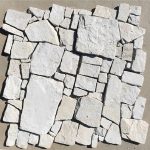Introduction
Stone veneer has become increasingly popular in the construction and design industry due to its aesthetic appeal, durability, and versatility. Whether used for exterior facades, accent walls, fireplaces, or any other application, stone veneer can enhance the look and feel of any space. In this comprehensive guide, we will delve into the intricacies of stone veneer installation, covering everything from preparation and planning to execution and maintenance.
Chapter 1: Understanding Stone Veneer
Before diving into the installation process, it is essential to have a clear understanding of what stone veneer is. Stone veneer is a thin layer of natural or manufactured stone that is used to mimic the appearance of traditional stone masonry. It offers the same visual appeal as natural stone but is lighter in weight and easier to install. Stone veneer comes in a variety of colors, shapes, and textures, allowing for endless design possibilities.
Chapter 2: Types of Stone Veneer
There are two main types of stone veneer: natural stone veneer and manufactured stone veneer. Natural stone veneer is made from real stone that is quarried and cut into thin slices, resulting in a unique and authentic look. Manufactured mosaic tile for sale , on the other hand, is made from a mixture of cement, aggregates, and pigments that are molded to resemble natural stone. While natural stone veneer tends to be more expensive, manufactured stone veneer offers a more affordable alternative with a wide range of design options.
Chapter 3: Planning and Preparation
Proper planning and preparation are crucial for a successful stone veneer installation. Before starting the project, assess the surface where the stone veneer will be applied to ensure it is clean, flat, and structurally sound. It is also important to determine the type of substrate you will be working with, whether it is wood, metal, concrete, or drywall. Additionally, consider factors such as weather conditions, building codes, and permits that may affect the installation process.
Chapter 4: Tools and Materials
To install stone veneer, you will need a variety of tools and materials. Common tools include a trowel, notched trowel, masonry saw, level, tape measure, and grout bag. The materials required for installation include stone veneer panels or individual stones, mortar or adhesive, metal lath, flashing, weep screed, and sealant. It is important to use high-quality tools and materials to ensure a professional and long-lasting installation.
Chapter 5: Installation Process
The installation process for stone veneer can vary depending on the type of veneer and substrate being used. In general, the process involves the following steps:
1. Prepare the substrate by cleaning and applying a moisture barrier.
2. Install metal lath and flashing to provide a secure base for the veneer.
3. Apply a scratch coat of mortar or adhesive to the substrate.
4. Position the stone veneer panels or individual stones in the desired pattern.
5. Secure the veneer in place by pressing firmly and tapping gently with a rubber mallet.
6. Fill the joints between the stones with mortar or grout using a grout bag.
7. Clean off any excess mortar or grout with a damp sponge.
8. Allow the installation to cure and dry according to the manufacturer's instructions.
Chapter 6: Finishing Touches and Maintenance
Once the stone veneer installation is complete, it is essential to apply a sealant to protect the surface from moisture and stains. Additionally, consider adding trim pieces, corner pieces, or other decorative elements to enhance the overall look of the installation. Regular maintenance is also important to ensure the longevity of the stone veneer. Clean the surface periodically with a mild detergent and water, and inspect for any signs of damage or wear that may require repairs.

Conclusion
Stone veneer installation can be a rewarding and transformative project that adds beauty and value to any space. By following the steps outlined in this guide and paying attention to detail, you can achieve a professional-looking installation that will stand the test of time. Whether you are a seasoned contractor or a DIY enthusiast, stone veneer offers endless possibilities for creating stunning and timeless designs.
